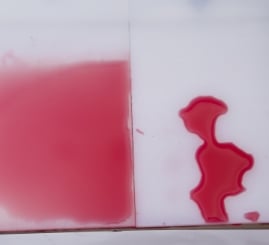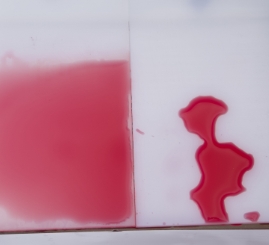Plasma Treatment Articles
Plasma Activation
|
3 min read

Increasing the bond strength in materials can often be challenging in a manufacturing process. Surface activation using plasma can be extremely beneficial in solving a bond strength deficiency between two materials. If you activate a surface with plasma, then the resulting bond would have a covalent bond. This means that the base material and the adhesive will share electrons resulting in increased bond strength.
 When using plasma activation to promote adhesion, it also has the benefit of cleaning the surface material. A plasma treatment will first remove organic contaminants from the surface. These resultant molecules are then expelled through the vacuum system. This will ensure that the substrate has a clean surface, which will also promote higher bond strength of the materials. This allows for the possible elimination of an additional manufacturing cleaning step.
When using plasma activation to promote adhesion, it also has the benefit of cleaning the surface material. A plasma treatment will first remove organic contaminants from the surface. These resultant molecules are then expelled through the vacuum system. This will ensure that the substrate has a clean surface, which will also promote higher bond strength of the materials. This allows for the possible elimination of an additional manufacturing cleaning step.
Plasma activation is also a chemical process. It does not have to create wells in the surface, which only creates additional surface area for adhesives to bond to. An activation opens bonds on the surface, which allows for covalent bonds to form that are stronger. In most cases, the substrate will undergo a change and won’t even be seen with the naked eye. This allows for the aesthetics of the product to remain the same.
Activation of surfaces is not a new application. It has been used in other forms for many different business types. It has often been employed in the form of wet chemical processes or even flame treatments. These other processes can be toxic and dangerous, as well as not very precise and optimized. Plasma activation has many parameters that can be changed and “dialed in” to create a process for each different material composition.
A specific industry that has utilized this plasma activation treatment includes the automobile industry, specifically in Europe. Car companies have plasma treated their cars' exterior in order to activate the surface prior to painting. This allows for a strong bond of the paint (water-based, not oil-based) directly to the vehicle without the use of a primer. Environmental regulations in Europe no longer allow oil-based paints in this industry.

Surface energy is one of the most important factors to increase bond strength. Surface energy is a measurement of work per unit area done by the force that creates the surface. Surface energy is measured in N/m and can often be determined using dyne test inks. This is a simple test where inks of various strengths are deposited on a surface and visually can determine whether to pass or fail. A pass is accomplished when that particular strength dyne ink wets out on the surface. A failure occurs when that dyne ink clumps or does not wet out over the surface.
Increasing the surface energy of a material is the best way to increase bond strength between two materials. Plasma treatment, specifically plasma activation, is a very effective way to raise the surface energy. Plasma activation works by opening bonds on the surface. This occurs by removing hydrogen atoms for carbon chains in plastics. The resultant open bonds are then receptive to creating new bonds with the following adhesive or painting step. This is just one example of how plasma activation can increase the bond strength of one specific material. It can also be employed in many other materials, including glass, metals, and rubber composites.
When choosing to use plasma activation to improve surface energy on a substrate, it is important to understand the chemistries involved. Different process gases can be chosen to get the desired effect. The most common gas used for activation is oxygen, but air, from just the atmosphere in the room, can be used and is often sufficient. If these two examples of process gases don’t prove to work, there are other gases to use as well, which include Argon, Hydrogen, Helium, and Nitrogen. Having an extensive background or even a basic understanding of chemistry will aid greatly in choosing the correct process gas for plasma activation in order to increase a material’s surface energy.
Plasma treatment of materials can be a very effective way to significantly increase bond strength in manufacturing. Plasma activation is a great tool to use in order to activate a surface on a material which increases the surface energy in order to bond to that material immediately after treatment. Surface energy increase is the main goal when incorporating plasma activation into a manufacturing or research process. There are variables to consider which depend on the materials you are trying to bond; however, there are many applications for plasma in many manufacturing processes.
To learn more about surface activation and its benefits in the manufacturing process, please read our article titled "Manufacturer’s Surface Activation Guide for Improved Adhesion."
Plasma: +1 (248) 761 9253
Distribution: +1 (248) 549 8600
Fax: +1 (248) 549 3533
info@thierry-corp.com
Comments